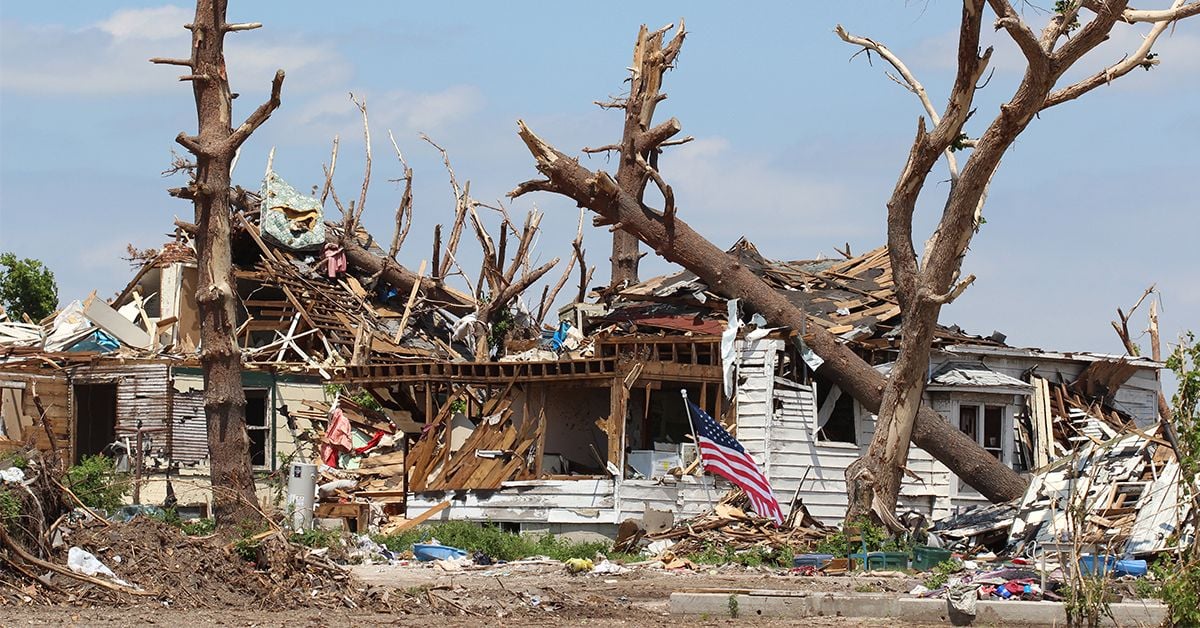
West Virginia has seen its fair share of severe weather in recent months. It is important to be prepared for severe weather in order to prevent property damage and bodily injuries.
Thunderstorms
A thunderstorm is considered severe if it produces hail at least 1 inch in diameter or has wind gusts of at least 58 miles per hour. Every thunderstorm produces lightning, which kills more people some years than tornadoes or hurricanes. Heavy rain from thunderstorms can cause flash flooding. High winds can damage homes and blow down trees and utility poles, causing widespread power outages. Every year people are killed or seriously injured because they didn’t hear or ignored severe thunderstorms warnings.
The following safety tips could save your life during a severe weather event:
- Listen to local news or NOAA Weather Radio for emergency updates. Watch for signs of a storm, like darkening skies, lightning flashes or increasing wind.
- If you can hear thunder, you are close enough to be in danger from lightning. If thunder roars, go indoors! Don’t wait for rain. Lightning can strike out of a clear blue sky.
- Avoid electrical equipment and corded telephones. Cordless phones, cell phones and other wireless handheld devices are safe to use.
- Avoid contact with plumbing. Do not wash your hands, do not take a shower, do not wash dishes, and do not do laundry. Plumbing and bathroom fixtures can conduct electricity.
- Stay away from windows and doors, and stay off porches.
- If you are driving, try to safely exit the roadway and park. Stay in the vehicle and turn on the emergency flashers until the heavy rain ends.
- If you are outside and cannot reach a safe building, avoid high ground; water; tall, isolated trees; and metal objects such as fences or bleachers. Picnic shelters, dugouts and sheds are NOT safe.
Also, the following definitions are useful to remember when severe weather threatens:
- Severe Thunderstorm Watch means conditions are favorable for severe weather. Continue normal activity, but monitor weather conditions closely.
- Severe Thunderstorm Warning means to seek shelter immediately and monitor conditions on radio or television. Follow all of the above instructions until the storm passes.
- Tornado Watch means there is a possibility of one or more tornadoes in your area. Continue normal activity but monitor weather conditions closely.
- Tornado Warning means a tornado has been sighted and may be approaching — seek shelter immediately.
Floods
Floods are one of the most common hazards in the United States, however not all floods are alike. Some floods develop slowly, while others such as flash floods, can develop in just a few minutes and without visible signs of rain.
Flash floods can occur within a few minutes or hours of excessive rainfall, a dam or levee failure, or a sudden release of water held by an ice jam. Flash floods often have a dangerous wall of roaring water carrying rocks, mud and other debris. Overland flooding, the most common type of flooding event typically occurs when waterways such as rivers or streams overflow their banks as a result of rainwater or a possible levee breach and cause flooding in surrounding areas. It can also occur when rainfall or snowmelt exceeds the capacity of underground pipes, or the capacity of streets and drains designed to carry flood water away from urban areas.
Be aware of flood hazards no matter where you live or work, but especially if you are in low-lying areas, near water, behind a levee or downstream from a dam. Even very small streams, gullies, creeks, culverts, dry streambeds or low-lying ground that appear harmless in dry weather can flood.
Take Action
The best way to be prepared for severe weather is to develop an emergency plan based on your local weather hazards and practice your plan. Your family may not be together when a disaster strikes so it is important to plan in advance: how you will get to a safe place; how you will contact one another; how you will get back together; and what you will do in different situations.
Ready.gov has made it simple for you to make a family emergency plan. Download the Family Communication Plan for Parents and Kids (PDF) and fill out the sections before printing it or emailing it to your family and friends.










